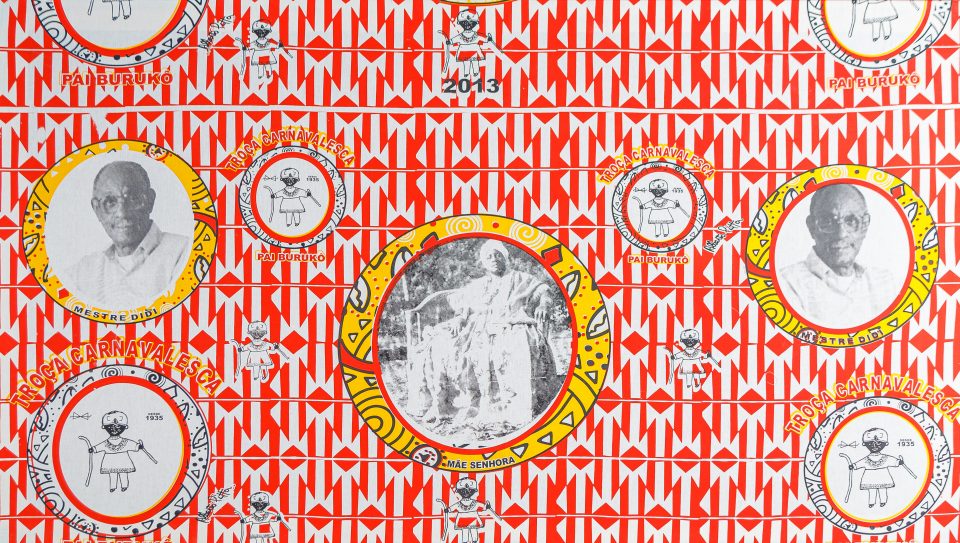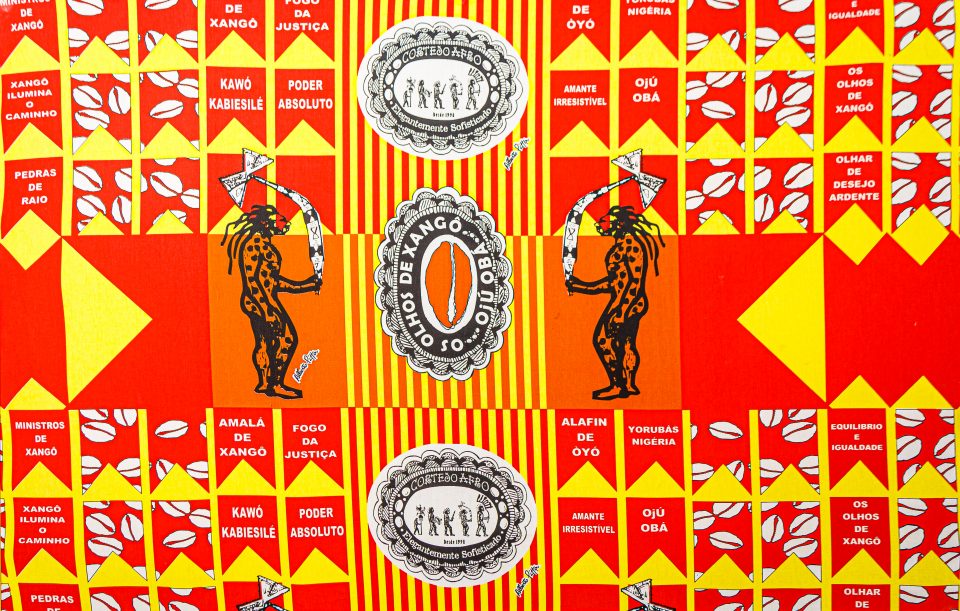Alberto Pitta is a visual and carnival artist. For 40 years he has been dedicated to developing research work and artistic creations that explore Afro-Bahian prints. Pitta is one of the pioneers of these prints, where symbols, tools, clothing and ornaments of the orishas (deities from a Western African religion known as Candomblé) are a source of inspiration. Music and dance are important parts of Candomblé ceremonies and meetings, as Candomblé practice favours and encourages artistic creation, and this is a large source of inspiration for the codes and symbols within Pitta‘s works. Pitta‘s paintings, drawings, fabrics, clothes, objects and serigraphs are visual testimonies of a ‘contemporary ancestry’, infused with the rhythms, shapes, colours and symbols of Afro-Brazilian cults and Carnival in Bahia.
Commissioned by the Biennale of Sydney with assistance from assistance from the The Fundação Nacional de Artes.




